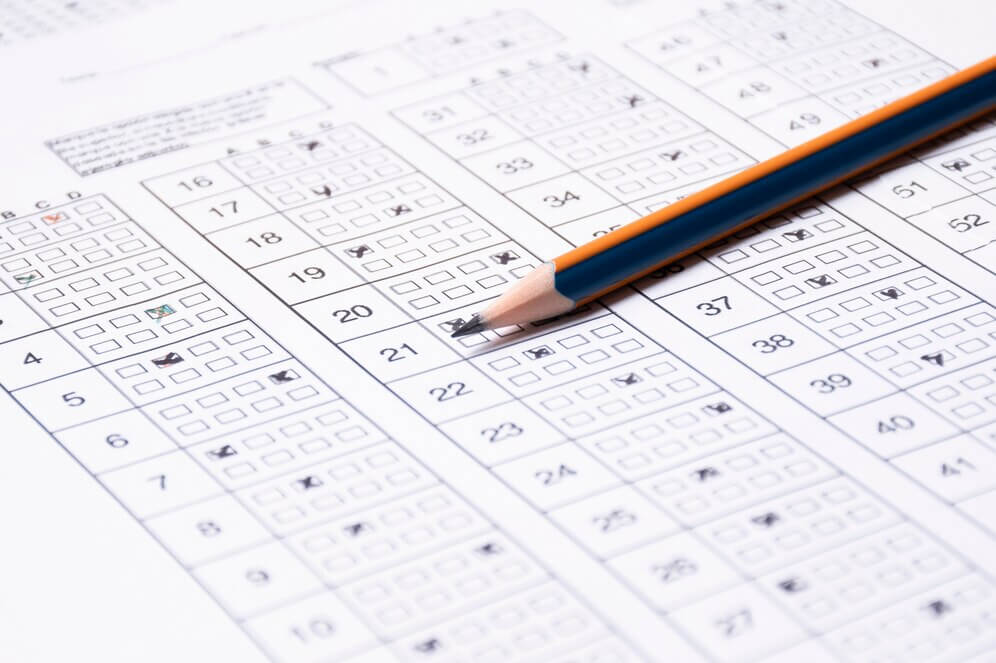Preparing for the CLAT exam requires more than just studying; it needs a well-planned strategy. A good CLAT mock test strategy can make a big difference in your performance.
By regularly practicing with CLAT mock tests, you can understand the exam pattern, manage your time better, and identify your strengths and weaknesses.
Here, we are guiding you on creating an effective strategy for CLAT test series, helping you to make the most of your practice sessions and improve your chances of success in the exam.

CLAT Mock Test Strategy
Here’s the complete strategy for CLAT mock tests:
1. Understand CLAT Exam Pattern
Understanding the CLAT exam pattern is a crucial first step in your preparation journey. The CLAT exam 2026 is structured to assess a candidate’s aptitude and skills across various domains, and being familiar with this structure can significantly enhance your performance.
The CLAT exam consists of multiple-choice questions divided into different sections. Each section in CLAT syllabus tests specific skills and knowledge areas.
English Language:
This section assesses your comprehension and language skills. It includes reading comprehension passages and questions related to grammar, vocabulary, and contextual understanding.
- Number of Questions: 22-26
- Marks: 22-26
Current Affairs, including General Knowledge:
This section tests your awareness of current events and general knowledge. Questions are based on recent events, history, geography, and other general topics.
- Number of Questions: 28-32
- Marks: 28-32
Legal Reasoning:
This section evaluates your understanding of legal principles and their application. It includes passages related to legal matters, public policy questions, and ethical dilemmas.
- Number of Questions: 28-32
- Marks: 28-32
Logical Reasoning:
This section tests your analytical and logical thinking skills. It includes questions on logical sequences, arguments, and patterns.
- Number of Questions: 22-26
- Marks: 22-26
Quantitative Techniques:
This section assesses your mathematical abilities, focusing on basic arithmetic, algebra, and data interpretation.
- Number of Questions: 10-14
- Marks: 10-14
The total duration of the CLAT exam is two hours. Each question carries one mark, and there is a negative marking of 0.25 marks for every incorrect answer.
Upcoming CLAT Exams:
2. Set Clear Goals
Setting clear goals is a vital part of any successful CLAT preparation strategy. Clear goals provide direction, keep you focused, and help measure your progress effectively.
Start by defining what you want to achieve with your CLAT 2026. Your objectives might include scoring above a certain percentile, mastering particular sections, or getting into a specific National Law University (NLU).

Short-term Goals:
Break down your preparation into manageable chunks with short-term goals. These could be daily or weekly targets, such as completing a certain number of mock tests, mastering a specific topic, or improving speed in a particular section.
Example: “Complete two mock tests this week and review the answers thoroughly.”
Long-term Goals:
Long-term goals span the entire preparation period leading up to the CLAT exam. These goals provide a broader vision and help maintain your motivation over time.
Example: “Achieve a score of 90+ in the final mock test before the CLAT exam 2026.”
Specific and Measurable Goals:
Ensure that your goals are specific and measurable. Vague goals like “study more” are less effective than precise ones like “study logical reasoning for 2 hours every day.”
Example: “Improve accuracy in the Legal Reasoning section to 80%.”
3. Create Mock Test Schedule
Creating a mock test schedule is a crucial part of your CLAT preparation strategy. A well-structured schedule ensures regular practice, helps track progress, and allows for continuous improvement.
- Begin by assessing your current level of preparation. Take an initial free CLAT mock test to understand your strengths and weaknesses. This will help you create a schedule that addresses your specific needs.
- Decide how often you will take mock tests. Initially, taking one mock test per week is a good starting point. As you get closer to the exam, you can increase the frequency to two or more tests per week.
Questions for Practice:
- Percentage Questions for CLAT
- Venn Diagram Questions for CLAT
- Profit Loss Questions for CLAT
- Compound Interest & Simple Interest Questions
- Top Mensuration Questions for CLAT
4. Simulate Exam Conditions
Simulating exam conditions during your mock tests is crucial for effective CLAT preparation. This practice helps you acclimate to the pressures and environment of the actual exam, ensuring you are well-prepared for the test day.

- Find a quiet and comfortable place where you can take your mock test without interruptions. Inform family members or roommates about your test schedule to minimize disturbances.
- Use a timer to strictly adhere to the two-hour time limit of the CLAT exam 2026. This helps you practice managing your time and completing the test within the allotted duration.
- Turn off your phone, notifications, and other electronic devices that could distract you. Focus solely on the mock test to simulate the exam’s focus requirements.
- Have all the materials you need, such as pens, rough sheets, and a water bottle, ready before you start the test.
Know about the benefits of CLAT Mock Tests.
5. Use Printed or Online Mock Tests
Use either printed mock test papers or online CLAT mock tests. Ensure the test interface or paper format is similar to the actual exam.
Choose the mock tests by Law Prep Tutorial that are based on the latest exam pattern, come with a real exam-like environment, and provide access to AI-based learning management system (LMS) app.
- Do not pause or stop the test once you have started. Treat it as a continuous, uninterrupted session to build the stamina needed for the actual exam.
- After completing the mock test, take some time to review your performance immediately. Reflect on your time management, helping stress and pressure, and overall experience to identify areas for improvement.
- On the day of your mock test, follow the same routine you plan to follow on the actual exam day. This includes waking up at the same time, having a similar breakfast, and starting the test at the same hour as the real exam.
Try a free CLAT mock test now!
6. Analyze Mock Performance
Analyzing your performance after taking tests is a crucial step in your CLAT mock test strategy. This process helps you understand your strengths and weaknesses, identify patterns in your mistakes, and make necessary adjustments to your study plan.
- Start by going through all the questions you answered correctly and incorrectly. Understand why your answers were right or wrong. Pay special attention to the questions you got wrong to learn from your mistakes.
- Categorize your mistakes by topic or section. This helps you pinpoint specific areas where you need improvement. Look for patterns in the types of questions you frequently get wrong.
- Evaluate how you managed your time during the test. Identify sections where you spent too much or too little time. Adjust your strategy to ensure a balanced approach to all sections.
- Check your accuracy rate in each section. A high number of incorrect answers can indicate a need for more focused practice or a change in approach to answering questions.
- For each question you got wrong, try to understand the reasoning behind the correct answer. This helps you learn and avoid making similar mistakes in the future.
7. Adjust Study Plan
Use the insights gained from your analysis to adjust your CLAT 2026 study plan. Focus on weak areas, revise challenging topics, and allocate more practice time to sections where you need improvement.
Example: If your analysis shows that you need more practice in logical reasoning, include additional practice sessions for this section in your study plan.

- Based on your analysis, set specific goals for your next mock test. These could include improving accuracy in a particular section, reducing careless mistakes, or better managing your time.
- Keep a record of your performance in each CLAT mock test. Tracking your scores and areas of improvement over time helps you see your progress and stay motivated. The LMS app that comes with CLAT Mock Test by Law Prep Tutorial helps you track past records and analyze the performance with analytics features.
- If possible, discuss your mock test performance with a mentor, teacher, or study group. They can provide additional insights and suggestions for improvement. For example, the students of offline and online CLAT coaching by Law Prep Tutorial discuss their mock performance with the teachers on a regular basis.
Important CLAT Questions for Practice:
| CLAT Legal Reasoning Questions | CLAT Logical Reasoning Questions |
| CLAT English Questions | CLAT GK Questions |
8. Take Sectional Tests
In addition to full-length mock tests, take sectional tests that focus solely on your weak areas. This targeted practice can help you improve specific skills and boost your confidence.
You can get sectional tests with the CLAT Game Changer Kit (study material package) by Law Prep Tutorial.
Improvement takes time and effort, so stay positive and persistent. Celebrate small successes and keep pushing yourself to do better.

Key resources to explore after your CLAT exam
| CLAT 2026 Result | CLAT 2026 Answer Key |
| CLAT 2026 Counselling | CLAT 2026 Admit Card |
| CLAT Marks vs Rank | CLAT 2026 Rank Predictor |
| CLAT 2026 College Predictor | CLAT 2026 Toppers |
| CLAT 2026 Question Paper |
Importance of Having Mock Test Strategy for CLAT
Having a CLAT mock test strategy is crucial for several reasons.
Firstly, it helps you understand the exam pattern thoroughly. By regularly practicing with mock tests, you become familiar with the types of questions, the marking scheme, and the overall structure of the exam.
This familiarity reduces anxiety and boosts your confidence, allowing you to approach the actual exam with a clear understanding of what to expect.
Secondly, a CLAT mock test strategy helps in effective time management. The CLAT exam is time-bound, and managing time efficiently during the test is essential.
By taking mock tests under timed conditions, you learn how to pace yourself, allocate time to different sections, and ensure that you complete the exam within the given timeframe. This practice helps in minimizing the risk of running out of time during the actual exam.
Another important aspect is the identification of strengths and weaknesses. Mock tests for CLAT provide a clear picture of your performance in various sections. By analyzing your results, you can pinpoint the areas where you excel and the topics that require more attention.
This targeted approach allows you to focus your efforts on improving weaker areas, leading to a balanced and comprehensive preparation.
Moreover, a mock test strategy for CLAT helps in building stamina and endurance. The CLAT exam 2026 is two hours long, and maintaining focus and energy throughout this period is crucial.
Regularly taking full-length mock tests helps you build the mental and physical stamina needed to stay alert and perform well during the entire duration of the exam.
Finally, integrating mock tests into your CLAT study plan provides continuous feedback and helps track progress. By regularly reviewing your performance, you can see how much you have improved over time and make necessary adjustments to your preparation strategy.
Resources for CLAT PG Preparation:
FAQs About CLAT Test Series Strategy
Both are important. Full-length mock tests help you practice the entire exam under timed conditions, while sectional tests allow you to focus on and improve specific areas where you may be weaker.
To simulate exam conditions, take mock tests in a quiet place, use a timer, minimize distractions, and follow the exact format of the CLAT exam. This helps you get used to the pressure and environment of the actual test.
After taking a mock test, review all your answers, especially the incorrect ones. Identify your weak areas, analyze the reasons for mistakes, and adjust your study plan accordingly. Track your progress over time to see improvements.
Improve time management by practicing with timed mock tests, setting time limits for each section, prioritizing easier questions, and avoiding getting stuck on difficult ones. Regular practice helps you develop an effective pacing strategy.
If you score low, identify the areas where you are struggling and focus on improving those topics. Seek help from teachers or mentors, use targeted study resources, and adjust your study plan to allocate more time to weak areas.
Stay motivated by setting clear, achievable goals, tracking your progress, and celebrating small successes. Keep reminding yourself of your ultimate goal and the benefits of consistent practice.
Wrapping Up:
A well-planned CLAT mock test strategy is essential for success. It helps you understand the exam pattern, manage time, and focus on weak areas. Regular practice and thorough analysis can significantly improve your performance.
For the best preparation, consider the CLAT mock tests by Law Prep Tutorial. They offer numerous tests, sectional tests, topic tests, and access to an LMS app, along with detailed reports to track your progress.
These resources provide the structured practice and feedback you need to excel in the CLAT exam.
Free CLAT Study Material for You:
| CLAT Previous Year Papers PDF | CLAT Sample Papers |
| CLAT Syllabus PDF | Free CLAT Coaching |
| CLAT Current Affairs | CLAT Topper Interviews |
| CLAT Videos | CLAT Mock Tests |
Must Know for Every CLAT Aspirant:


